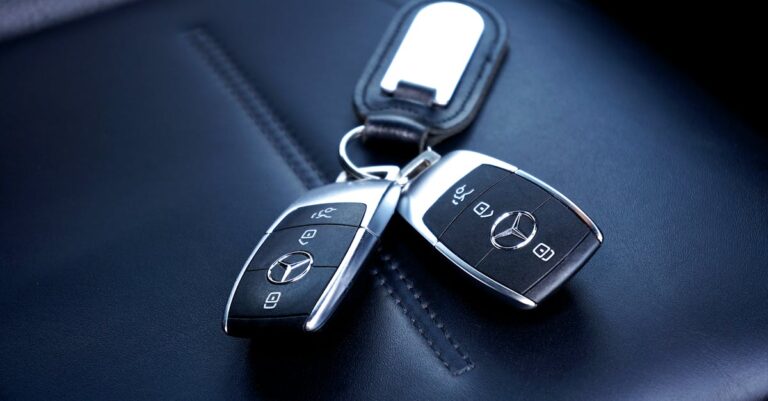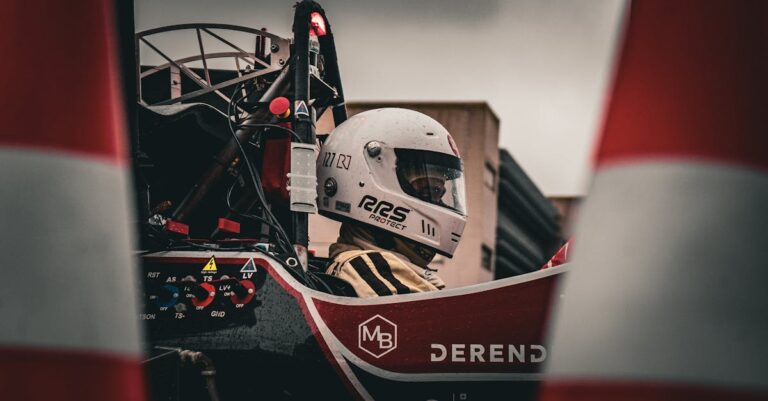Table of Contents
- Share the Road: A Car Driver’s Guide to Motorcycle Awareness
- Why Does Motorcycle Awareness Even Matter?
- Seeing is Believing: Overcoming Visibility Challenges
- Understanding Motorcycle Behavior
- Common Scenarios Where Awareness is Crucial
- Tips for Car Drivers to Enhance Motorcycle Safety
- Conclusion: Driving Aware, Driving Safe
- Frequently Asked Questions (FAQs)
Share the Road: A Car Driver’s Guide to Motorcycle Awareness
Have you ever been driving along, maybe humming to your favorite tune, and suddenly felt a jolt of surprise as a motorcycle seems to appear out of nowhere? It happens to the best of us. Motorcycles, with their smaller size and zippy nature, can sometimes feel like ninjas on the road. But here’s the thing: they aren’t invisible, and learning to actively look for them is a crucial part of being a safe and responsible car driver. This isn’t just about following rules; it’s about understanding, empathy, and sharing the road safely with everyone, especially our two-wheeled neighbors. Let’s dive into why motorcycle awareness is so vital and what you, as a car driver, can do to make the roads safer for everyone.
Why Does Motorcycle Awareness Even Matter?
Okay, let’s get real for a second. Why should you, comfortably cocooned in your car with airbags and crumple zones, spend extra energy thinking about motorcycles? Isn’t it their responsibility to watch out too? Well, yes, safety is everyone’s job. But the stakes are dramatically different. Understanding this difference is the first step towards becoming a more motorcycle-aware driver.
The Vulnerability Factor: Understanding the Risks
Picture this: you’re in your car, surrounded by metal, airbags, seatbelts, maybe even advanced safety features. Now picture a motorcyclist. What’s between them and the asphalt? Usually, just their riding gear – helmet, jacket, gloves, boots. There’s no roll cage, no bumper, no side-impact protection. Even a relatively minor collision that might just dent your bumper could have devastating consequences for a rider. They are incredibly exposed to the elements, road hazards, and, most importantly, the impact of a collision. When things go wrong, they don’t have the luxury of a fender bender. Their bodies absorb the force. This inherent vulnerability is why car drivers bear a significant responsibility to be extra vigilant.
It’s a Two Way Street: Shared Responsibility
Now, this isn’t about placing blame solely on car drivers. Riders absolutely have a responsibility to ride defensively, wear protective gear, be visible, and follow traffic laws. However, due to the physics involved and the lack of protection, the consequences of a car driver’s mistake are often far more severe for the rider. Think of it like navigating a harbor: a large ship (the car) needs to be much more mindful of smaller boats (motorcycles) because even a small wake from the ship can capsize the boat. Sharing the road means acknowledging this dynamic and adjusting our driving habits accordingly. It’s about mutual respect and understanding that we all want to get home safely.
Seeing is Believing: Overcoming Visibility Challenges
One of the biggest hurdles in car-motorcycle interactions is simply seeing each other. Motorcycles are masters of hiding in plain sight. Their slim profile can easily get lost against the backdrop of other vehicles, road signs, or even dappled sunlight through trees. Let’s break down why they can be so hard to spot.
The Size Difference: Why Bikes Get Lost in Blind Spots
It sounds obvious, right? Motorcycles are smaller than cars. But the implications are huge. A motorcycle can be completely obscured by your car’s blind spots – those areas around your vehicle that aren’t visible in your mirrors. While a quick glance in the mirror might reveal a car lurking there, a motorcycle can easily vanish.
Checking Blind Spots: More Than Just a Glance
We’re all taught to check our mirrors before changing lanes or turning. But for motorcycle awareness, a quick mirror check isn’t enough. You need to physically turn your head and look over your shoulder – the classic “shoulder check.” Why? Because that slim motorcycle profile might be tucked right alongside your rear quarter panel, completely invisible in any mirror. Make it a habit: Mirror, Signal, HEAD CHECK, Manoeuvre. That head check isn’t optional; it’s potentially life-saving. Think of it as scanning the horizon, not just staring straight ahead. You need to actively search for potential hazards, and motorcycles require that extra bit of searching.
The A Pillar Problem
Ever notice those thick pillars on either side of your windshield (the A-pillars)? They hold up the roof, which is great, but they also create significant blind spots, especially when you’re approaching intersections or navigating curves. A motorcycle, particularly one approaching from an angle, can be completely hidden behind an A-pillar for several crucial seconds. How do you combat this? Be an active looker. Don’t just glance; move your head slightly back and forth, “looking around” the pillar, especially before making turns or pulling out into traffic. It takes a fraction of a second but can reveal a hidden motorcycle.
Motorcycles Can Be Closer (And Faster) Than They Appear
Our brains are pretty good at judging the distance and speed of car-sized objects. We’ve had lots of practice! But motorcycles mess with our perception. Because they’re smaller, they often appear farther away and seem to be moving slower than they actually are. You might glance, see a motorcycle you think is a safe distance away, and decide to pull out or change lanes, only to realize – too late – that it was much closer and approaching faster than you estimated. This is especially true at night, when you might only see a single headlight. Always assume a motorcycle is closer and faster than it looks. Give yourself extra time and space when judging gaps in traffic involving motorcycles.
Understanding Motorcycle Behavior
Motorcycles don’t move exactly like cars, and sometimes their actions can seem erratic if you don’t understand the reasons behind them. Knowing *why* a rider might do something can help you anticipate their movements and react appropriately.
Why Do They Weave? Lane Positioning Explained
Have you ever seen a motorcycle moving side-to-side within its lane and wondered what they’re doing? It might look like showing off, but it’s usually a defensive strategy. Riders change lane position for several important reasons:
- Visibility: Moving within the lane helps them see around traffic ahead and makes them more conspicuous to drivers around them (including you!). Staying in one spot can make them blend into the background.
- Avoiding Hazards: Potholes, oil slicks, gravel, manhole covers, and road debris that your car might easily roll over can be serious hazards for a motorcycle. Riders constantly scan the road ahead and adjust their position to avoid these dangers.
- Wind Buffeting: Sometimes, they move to get out of the turbulent air generated by larger vehicles.
- Preparing for Turns: They might position themselves on one side of the lane to get a better view around a corner or to set up for the turn.
So, next time you see a motorcycle adjusting its position, understand it’s likely a calculated move for safety and visibility, not random weaving. Give them the space to do it.
Braking Differences: Stopping Distances Matter
Motorcycles and cars brake differently. While some modern motorcycles have excellent brakes, many don’t stop as quickly as a typical car, especially in wet conditions or if the rider isn’t expecting to brake hard. Furthermore, hard braking on a motorcycle requires significant skill to avoid locking up a wheel, which can easily lead to a crash. Because of this, riders often rely more on engine braking or prefer to brake more gradually. This means you absolutely *must* increase your following distance behind a motorcycle. Tailgating a car is dangerous; tailgating a motorcycle is potentially lethal. Give them at least a four-second following distance. This gives you more time to react if they brake suddenly and gives them room to maneuver or stop without feeling pressured.
Turn Signals: Sometimes They Forget (Or You Can’t See Them)
Motorcycle turn signals are often smaller and less bright than those on cars. They can be harder to see, especially in bright sunlight. Adding to the confusion, many motorcycles don’t have self-canceling turn signals like cars do. This means a rider might occasionally forget to turn off their signal after completing a turn or lane change. Don’t assume a flashing signal means the rider is definitely turning or changing lanes. Look for other cues: Is the rider slowing down? Are they positioning the bike for a turn? Are they looking in the direction of the turn? Wait until you see the motorcycle physically begin to turn before assuming their intention. Relying solely on the signal can lead to misjudgments.
Common Scenarios Where Awareness is Crucial
While vigilance is always needed, certain traffic situations are statistically more dangerous for motorcyclists. Being extra cautious in these scenarios can make a world of difference.
Intersections: The Danger Zone
Intersections are, by far, the most common location for motorcycle accidents involving cars. Why? It often comes down to drivers misjudging the motorcycle’s speed and distance or simply not seeing them at all, especially when making left turns. Before turning left across traffic, take an extra moment. Look specifically for motorcycles. Remember the “closer and faster than they appear” rule. Double-check for bikes approaching from the opposite direction. If you’re pulling out from a side street or driveway, look left, right, and then *left again* before proceeding. That second look left is crucial because a motorcycle could have entered your field of vision in the time it took you to look right.
Changing Lanes: Look Twice, Save a Life
We’ve touched on this, but it bears repeating because it’s so critical. Blind spots are a motorcycle’s nemesis during lane changes. Before you even think about flicking that indicator, go through the full routine: check your rearview mirror, check your side mirror, signal your intention early, and then perform a physical head check over your shoulder into the lane you want to enter. Do this every single time. Don’t get complacent. That one time you skip the head check could be the time a motorcycle is hidden exactly where you didn’t look. Remember, it’s not just about avoiding a collision; it’s about not startling a rider or forcing them into a sudden evasive maneuver, which can also lead to loss of control.
Following Distances: Give Them Space!
Tailgating is never okay, but as mentioned earlier, it’s especially dangerous behind a motorcycle. They need more room to react to road hazards you might not even notice. They might need to brake or swerve suddenly for debris or a pothole. If you’re right on their tail, you leave them no margin for error, and you severely limit your own reaction time if they do slow down quickly. Use the four-second rule as a minimum, and increase it in bad weather or heavy traffic. How do you measure four seconds? When the motorcycle passes a fixed object (like a signpost or shadow), start counting “one-thousand-one, one-thousand-two, one-thousand-three, one-thousand-four.” If you reach the object before finishing the count, you’re too close. Back off.
Tips for Car Drivers to Enhance Motorcycle Safety
So, what are the key takeaways? How can you actively contribute to motorcycle safety?
- Look Deliberately: Actively scan for motorcycles, don’t just passively glance. Remember they can be hidden by blind spots, A-pillars, and other vehicles.
- Check Blind Spots Religiously: Always perform a shoulder check before changing lanes or merging. Mirrors aren’t enough.
- Assume Invisibility: Drive as if motorcycles might be present even if you don’t immediately see them, especially at intersections and during lane changes.
- Judge Speed and Distance Carefully: Remember motorcycles often appear farther away and slower than they are. Give them extra room.
- Increase Following Distance: Maintain at least a four-second gap behind a motorcycle. More space equals more reaction time for everyone.
- Anticipate Rider Actions: Understand that lane positioning changes are often for safety or hazard avoidance, not recklessness.
- Use Your Signals Early: Signal your intentions clearly and well in advance to give riders time to react.
- Respect Their Lane: A motorcycle is entitled to the full width of the lane. Don’t crowd them or try to share the lane.
- Be Patient: Don’t tailgate or rush riders. Give them the time and space they need to navigate safely.
- Double-Check at Intersections: Especially before making left turns, look specifically for oncoming motorcycles. Look Left-Right-Left again before pulling out.
- Minimize Distractions: Put down the phone, limit conversations, and focus on the task of driving. A distracted driver is a danger to everyone, especially vulnerable motorcyclists.
Conclusion: Driving Aware, Driving Safe
Sharing the road isn’t just a catchy phrase; it’s a fundamental principle of safe driving. When it comes to motorcycles, a little extra awareness and understanding from car drivers can literally be the difference between life and death. By recognizing their vulnerability, actively looking for them, understanding their behavior, and giving them the space they need, you contribute significantly to a safer driving environment for everyone. It doesn’t take much effort – just a conscious decision to look, see, and respect the riders who share our roads. Let’s all commit to being more aware, more patient, and more responsible behind the wheel. Drive safe, and look out for bikes!
Frequently Asked Questions (FAQs)
1. Why do motorcyclists ride in the left or right portion of the lane instead of the center?
Riders choose specific lane positions for several reasons: to increase their visibility to drivers (avoiding blind spots), to see further down the road around traffic, to avoid oil slicks or debris common in the center of lanes, and sometimes to create a buffer from passing vehicles or roadside hazards. They are legally entitled to the full lane.
2. If a motorcycle’s turn signal is blinking, can I assume they are turning?
Not always. Many motorcycles lack self-canceling turn signals, so the rider might have forgotten to switch it off. Always look for other confirmation, like the rider slowing down, positioning the bike for the turn, or looking in the direction of the turn, before assuming their intent.
3. Are motorcycles allowed to “filter” or ride between lanes of slow or stopped traffic?
This practice, known as lane splitting or filtering, has varying legality depending on the state or region. Where legal, it’s often permitted under specific conditions (e.g., traffic moving below a certain speed). Regardless of legality, drivers should be aware that riders might do this and be cautious when changing lanes in congested traffic.
4. Why is a ‘head check’ or ‘shoulder check’ so important if I’ve already checked my mirrors?
Mirrors have significant blind spots where a narrow vehicle like a motorcycle can easily hide. A quick turn of the head to look over your shoulder directly into the adjacent lane is the only reliable way to ensure the space is clear before changing lanes or merging.
5. It seems like motorcycles accelerate very quickly. How does this impact my driving?
Motorcycles often have a high power-to-weight ratio, allowing them to accelerate faster than many cars. This reinforces the need to accurately judge their speed and distance, especially when pulling into traffic. Don’t assume you have plenty of time; a motorcycle can close the gap much faster than you might expect. Always give them ample space.









